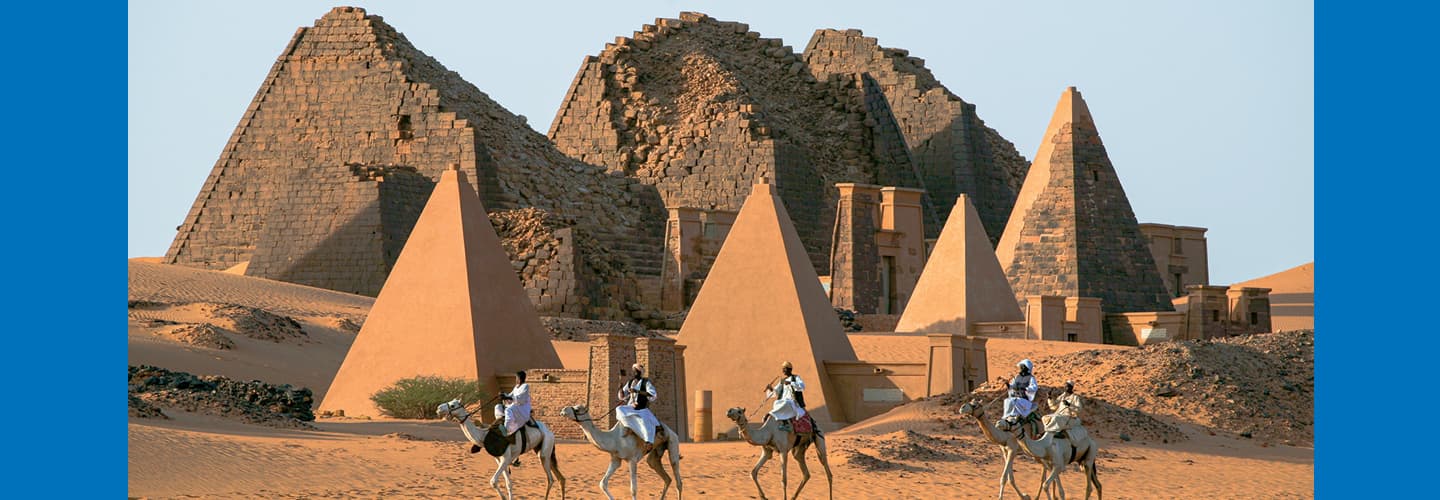When you think of pyramids, you probably think of Egypt. But Sudan has pyramids too. They’re in Meroe, a city on the east bank of the Nile River, 150 miles northeast of the capital, Khartoum. The Meroe pyramids are steeper and significantly smaller than the ones in Egypt, about 30 to 100 feet tall, compared with the 455-foot-tall Great Pyramid of Giza. As in Egypt, though, Sudan’s pyramids, which were built between 2,300 and 2,700 years ago, serve as royal burial sites. Although there are about 200 of them, they’ve remained relatively unknown; the majority of Sudanese people haven’t even had the opportunity to visit the sites. But that could soon change. In 2019, revolution led to the ousting of dictator Omar Hassan al-Bashir, who led Sudan through a series of wars and famines for 30 years. Now that a new government is in charge, many hope that archaeological sites might receive broader attention, not simply from researchers and international visitors but also from locals. “The Sudanese people have the right to reclaim their country,” says Tawdia Abdalaziz, a young doctor in Sudan. And, she adds, they want a country that can showcase its treasures to its visitors and its people.

